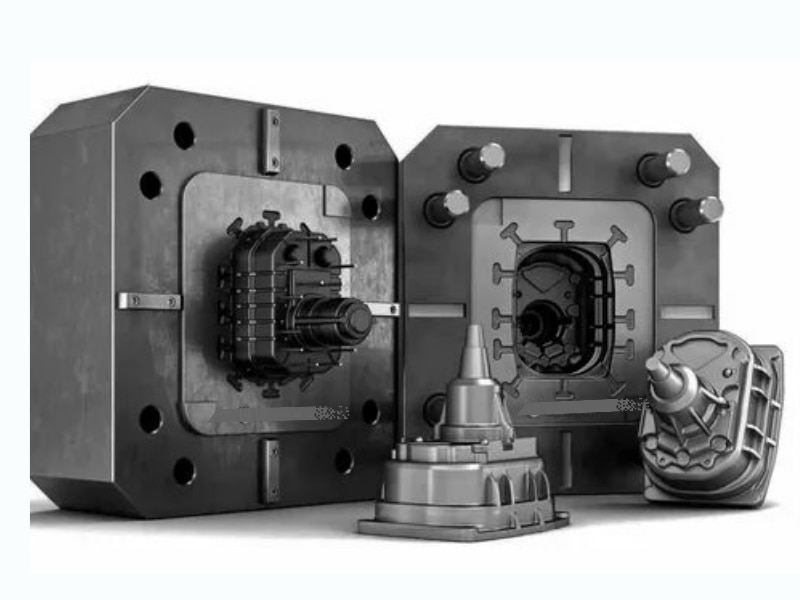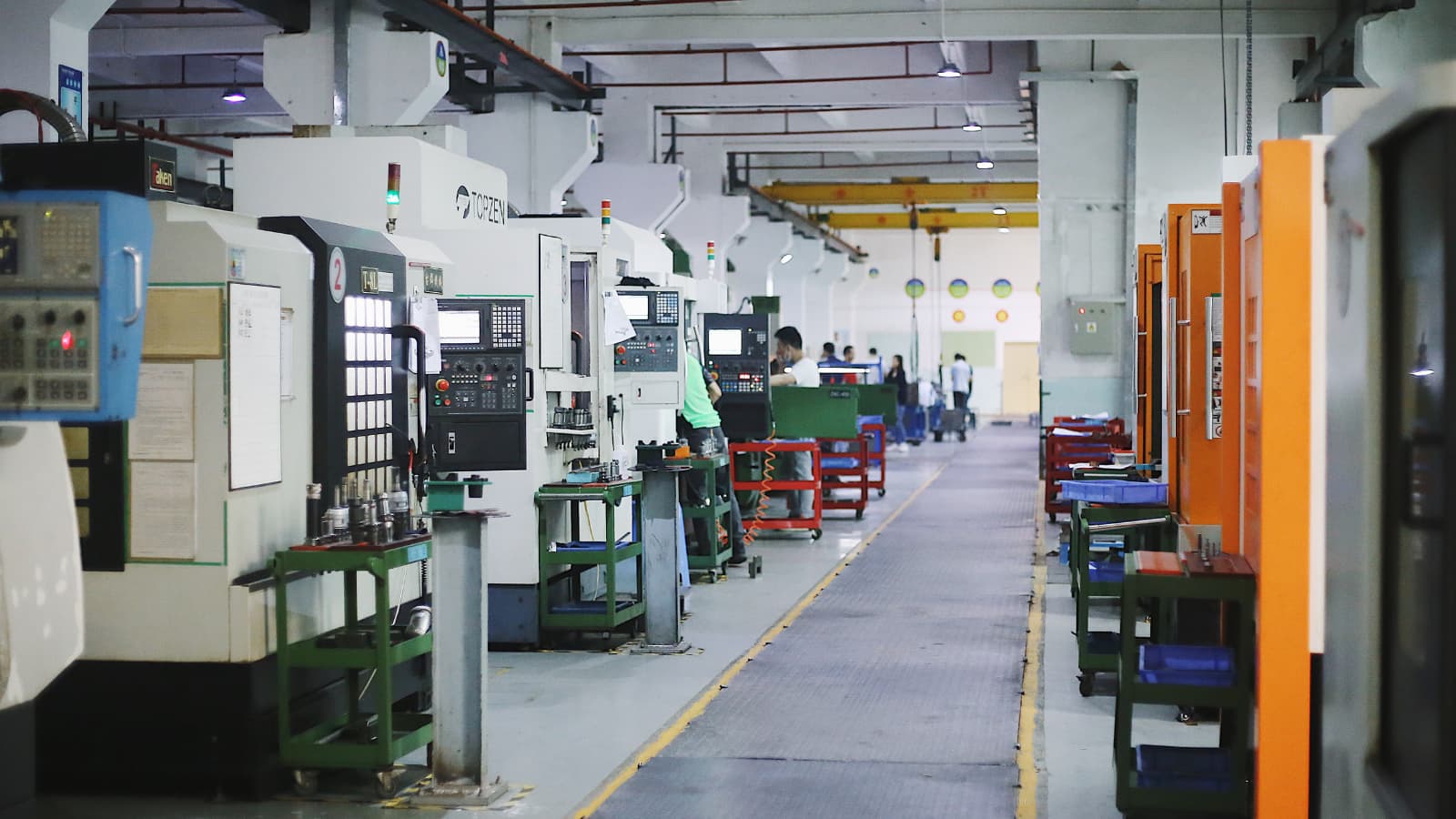Milling is among the most common subtractive manufacturing processes that use a rotating tool to cut a stationary flat surface. Before the process starts, the machinists have to take several considerations and a common dilemma for them is deciding on climb milling vs conventional milling.
Both climb and conventional milling processes have their merits and demerits, so there is no clear winner. The better choice for you depends on your application, preferences, and desired process characteristics.
The following will take a detailed look at both conventional and climb milling and compare them to give you a better idea of both the processes and help you make an informed decision when the time comes.
What’s Climb Milling
Climb milling or down milling is a process where the CNC cutting tool rotates in the same direction as the workpiece. The name comes from the fact that the cutting tool’s teeth climb onto the workpiece surface and deposit the chips behind the cutter, which eliminates the chances of recutting.
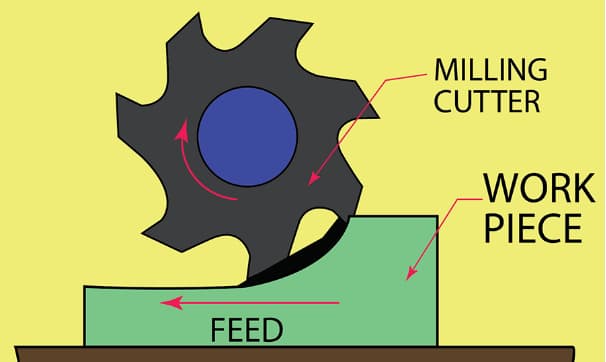
Some other properties that make climb milling different are the downward forces requiring lower holding requirements, chip width which decreases during the process, and the shear plane specifications.
These properties create favorable process conditions and give climb milling some key advantages. Here are a few:
Enhanced Surface Finishing
The chip thickness starts at full thickness but gradually decreases during the climb milling process. This causes fewer deflections during the cutting process. Moreover, the climb milling process leaves the chips behind the cutter, which prevents recutting and results in an excellent surface finish for CNC machined parts.
Low Heat Generation and Cutting Load
Since the chip width gradually decreases, the heat associated with the machining process remains within the workpiece. Furthermore, the cutting forces in this process face downwards, which reduces the overall workpiece holding requirements during horizontal milling processes.
Better Tool Life
Lower deflections and heat generation in the climb milling process have a direct effect on the tool life. Since the tool doesn’t go through so much stress during use, it naturally has a better service life and remains operational for a longer time.
While climb milling is excellent in many regards. There are some severe limitations of the process as well. Some of the main disadvantages of climb cutting are:
Excessive Vibrations
When dealing with thicker pieces or at faster feed rates, you’ll experience severe vibrations because of the tool’s impact on the workpiece. These excessive vibrations can cause multiple problems including tool deflection and damage. As a result, the overall accuracy of your workpiece will be affected.
Backlash
Another common issue of climb milling is the backlash, which happens when the cutting forces are not enough. While the problem is uncommon on CNC milling machines, older models almost always have this issue.
The main cause of the backlash issue is the cutter pulling on the table during operations. This backlash can potentially cause injury because of flying shrapnel and must always be taken seriously. It’s always recommended to avoid climb milling on older machines or use a backlash eliminator. It’s an additional component that absorbs the energy of the shrapnel and allows you to experience all the advantages of climb milling.
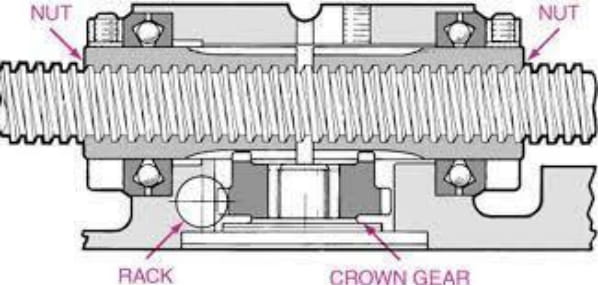
Unsuitability for Harder Materials
The climb milling process is not suitable for hard or rigid materials like cast iron, steel, and others because they can damage the cutting tool. During climb milling, the chip thickness is the highest in the beginning, which can damage the cutting tool while dealing with hard materials.
What’s Conventional Milling
As its name suggests, the conventional milling process is the traditional approach where the cutting tool rotation is against the movement of the workpiece. In this case, the cut is in the upwards direction, that’s why this milling technique is also called up milling.
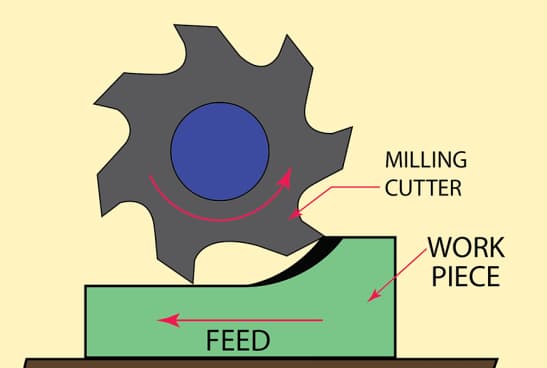
The conventional milling process is entirely the opposite of climb milling. In this case, the chip width starts from virtually zero and gradually increases. Furthermore, the chips evacuate in the path of the cutter because of its rotation, and the workpiece experiences an uplifting force because of the cutting action.
Just like climb milling, conventional milling also has a set of both advantages and limitations. Here are some of the key advantages that conventional milling has over the other technique.
No Backlash
One of the biggest advantages of up milling is that it has no backlash. In up milling, the rotation of the cutter and workpiece movement doesn’t pull the table, so there are no chances of backlash. Moreover, to reduce backlash before components such as eliminator, conventional milling was the preferred option.
Greater Stability
One problem with climb milling is that the workpiece tends to pull the workpiece toward the operator, which can affect the overall accuracy of the machine. Conventional machines don’t have that, which means greater control and stability in the results.
Furthermore, down milling also doesn’t create excessive vibrations while cutting harder materials because the chip width gradually increases and keeps the workpiece stable throughout the operations.
More Control
During the milling operations, the cutting tool tends to deflect away from the workpiece. While this affects the overall surface finishing of the product, it has an advantage as well. The chances of an unintentional cut would be low and the cuts won’t be too deep even when it happens.
The conventional milling process has several disadvantages as well. Here are the most important ones:
Excessive Heat Generation
Conventional milling evacuates the chip by gradually increasing the width, which means that all the generated heat is sustained by the tool. As a result, conventional milling tools are more likely to overheat, which can shorten their lifespan.
Rough Finish
The cutting process in conventional milling inherently causes a deflection in both the tool and the workpiece. Which results in a rougher surface. However, that quality also allows it to deal with harder materials more effectively. That’s why conventional milling is a better option if you are working with materials like cast iron and high-carbon steel.
Tool Damage
The excessive heat, along with the frictional and upwards forces cause the tool to sustain a lot of damage, which affects its overall life and may further damage the accuracy and precision of the workpiece.
Read More: What Are the Differences Between Horizontal and Vertical Milling
Climb vs Conventional milling: Comparing the Tool Deflection and Cut Accuracy
Whenever experts talk about climb vs conventional milling surface finish or other performance parameters, the main thing they deal with is the tool deflection and the cut accuracy. Both of the factors combine to have the most effect on the result and the process itself. The tool deflection affects the heat generation, while the cut accuracy has a direct impact on the results.
When it comes to tool deflection, conventional cutting is at an advantage in the matchup of climb milling vs conventional milling. The reason is the direction of the reactive forces. In the case of conventional milling, the direction of the forces is almost parallel to the tool feed, which means lower error and greater control over the process.
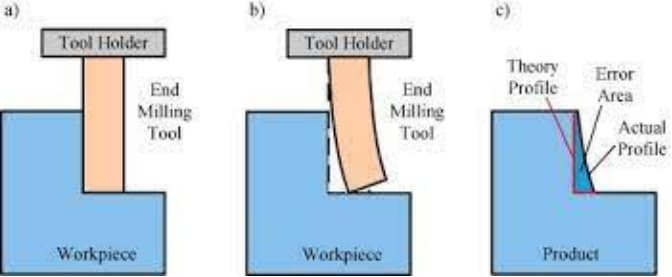
Climb milling, on the other hand, has a deflection that’s perpendicular to the movement of the workpiece. Naturally, that causes more deflection and even moves the workpiece as well, which affects the accuracy of your results.
Generally speaking, the conventional approach delivers you greater control and stability because of the tool deflection in the conventional milling vs climb milling comparison. However, accuracy is not the only factor. When it comes to surface finishing, precision, and longevity of the tools, it’s climb milling that takes the cake and delivers you the best overall results.
The Right Time to Choose Climb or Conventional Milling Processes
The right time to choose between up milling and down milling depends on your application, requirements, material, and some other factors. Generally, when talking about conventional vs climb milling, people often assume that climb milling is better because it has minimal load, offers a better surface finish, and ensures that the tool lasts for a long time. However, it’s not a suitable approach in every single case because there are severe drawbacks as well.
Similarly, conventional milling also comes with some obvious advantages. However, its limitation is just as significant. That’s why it’s important to have a deep understanding of both cutting processes to ensure that you’re making the right choice and are getting consistent results.
Here are a few tips to help you select between conventional and climb milling.
- Prefer climb milling for smaller parts that need an immaculate finish
- Don’t use climb milling with handheld routers
- Ensure that the traditional machine you are using has a backlash eliminator while climbing milling
- Use conventional milling hard and rigid material or hardened workpieces
- Don’t use climb milling on the first pass if the material is oxidized or has a rough surface
- For the best accuracy, use climb milling for the final pass
RapidDirect: Your Go-To Partner for CNC Milling and Other Machining Processes
Ensuring consistency and results in the CNC machining processes require a combination of the right tools and experience. Sometimes, small or medium businesses might not have access to that. A CNC machining service can be a perfect answer to your requirements. A top-tier CNC service like RapidDirect can help you maintain consistency and accuracy in your results.
At RapidDirect, we have a state-of-the-art facility that caters to all machining requirements. Whether you need climb milling or conventional milling, we can handle it all and deliver the results you need at the best price and in the shortest time.
Apart from all that, RapidDirect sets itself apart from other competitors through its automated quotation system. The online manufacturing portal has everything you need to get started with your CNC milling service. Simply upload the details of your part along with the material requirements and other details. Select the timeline you prefer and get an instant quotation from RapidDirect. It doesn’t get simpler than that!
Conclusion
Climb milling vs conventional milling is an old debate with no clear winner. The general perception among industry beginners is that climb milling is better because of the simplicity and other performance parameters. However, conventional milling has its own set of advantages as well.
In the end, the right kind of milling technique depends on your application and the specific requirements of the project. However, it’s important to have the basic knowledge of both processes to ensure that you are making an informed decision.
